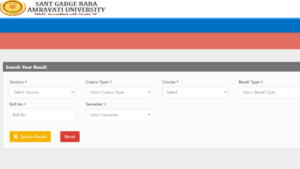Microeconomics is the study of how individuals, households, and businesses allocate scarce resources. It is a discipline of economics that focuses on individual economic agents’ behavior and how they interact with one another in the market. A subfield of economics known as microeconomics studies the characteristics of economic decision-makers, including families, individuals, and businesses. In other words, microeconomics is the social science that studies the relationships between human behavior, especially as it relates to how decisions about how to use and distribute limited resources are made. Microeconomics is one of the most important subjects in class 11 for those students who have opted for the Economics subject. In this article, we will get to know this concept. The notes and PDF of Chapter 1 of microeconomics class 11 is also given below for students.
Introduction to Microeconomics
The idea of microeconomics explains how and why different commodities have varying values, how people organize and collaborate with one another, and how they make more sensible or efficient judgments. The study of microeconomics focuses on the probabilities that arise when people make decisions in response to shifts in pricing, resources, incentives, and/or production techniques. Buyers, sellers, and business owners are examples of microeconomic subgroups into which individual actors are frequently divided. These organizations use money and interest rates as a pricing mechanism for coordination, creating the supply and demand for resources.
Microeconomics Class 11 Chapter 1 Notes
The area of economics known as microeconomics examines how people, households, and businesses behave while making decisions about the economy. All forms of business are collectively referred to as “firms” in this context. Some important notes on this topic is given below.
Class 11 Microeconomics Chapter 1 Notes- Economy
- A society’s economy is made up of a network of institutions and organizations that either facilitate or obstruct the creation and distribution of commodities and services.
- The economy determines how resources are allocated within a society, the cost of goods and services, and even what might be exchanged or bartered for those goods and services.
Class 11 Microeconomics Chapter 1 Notes- Types Of Economy
There are 3 different types of economy:-
Centrally Planned Economy: A centrally planned economy is one in which the government or another central body organizes all key economic activity. The government makes all significant choices involving the creation, exchange, and consumption of products and services. The goal of the central authority is to distribute the ultimate mix of commodities and services that the society as a whole deems desirable while also allocating resources in a certain way. The main objective is social welfare.
Market Economy: The market organizes all economic activities in a market economy. In a market, people freely interact as they engage in separate economic pursuits.
In other words, a market is a group of agreements between economic actors where they freely exchange goods or services. Additionally, there is influence from the private sector and no interference from the government. The economy is determined by the dynamics of supply and demand as well as by how people behave in the market. Maximizing profits is the key goal.
Mixed Economy: A mixed economy is one in which production components are owned and operated by both the public and private sectors. The main objectives are to maximize profits in the private sector and to promote social welfare in the public sector. The price system and the central planning authority both address fundamental issues.
Class 11 Economics Chapter 1 Notes- Basic Problems Of An Economy
- The choice is a fundamental economic issue, which is made worse by resource constraints.
- It is often referred to as the resource economization dilemma or the challenge of using a few resources more effectively to meet the demands of the greatest number of people.
- Factors of production include, for instance, natural resources like land and air, human resources like labor, capital resources like machinery and structures, and entrepreneurial resources like a person who is prepared to take risks.
- The root causes of core issues include unending human desires, a lack of economic resources, and alternate uses of resources.
Microeconomics Class 11 Chapter 1 Notes- Central Problems Of An Economy
(A) What to produce: An economy has finite resources that can be used for various purposes compared to endless demands. For example:-Consumer and producer product, products are produced by the economy. In order to determine what kinds of commodities and services will be produced and in what amounts, the economy must make these decisions.
(B) How much to produce: Selecting a production method is an issue. Two categories of production techniques exist
- Labor-Intensive Technique: A production method known as a labor-intensive methodology uses more labor than capital.
- Capital-Intensive Technique: This technique makes greater use of capital than labor.
(C) For whom to produce: It is a distribution issue concerning manufactured items among diverse socioeconomic groupings from whom to produce. It has two features:
- Personal distribution: When the national revenue is allocated based on who owns the production elements, this is known as a “personal distribution.”
- Functional distribution: Distribution of national revenue or output among different production factors, such as land, labor, capital, and entrepreneurship, with the aim of paying them in the form of rent, wages, interest, and profit.
Introduction to Microeconomics Class 11 Chapter 1
- It is a field of social science that investigates how commodities and services are made, sold, and used.
- In Adam Smith’s 1776 work, “An Inquiry into Nature and Causes of Wealth of Nature,” the term “Economics” was Economics was defined as managing a home with limited funds in the most cost-effective way possible.
- It seeks to address the issue of scarcity, which arises when the demand for goods and services exceeds the supply.
- The word “economics” is a combination of the Greek words “eco” and “nomos,” which both mean “house” and “accounts,” respectively.
- How to maintain family accounts has evolved into the topic’s current broad scope.
Microeconomics Class 11 Chapter 1 Notes-Meaning Of Economics
- It is the genuine study of choice and scarcity.
- It looks for solutions to balance the disparate needs and resources.
- Community living issues are explained by economics in terms of underlying resource costs and consumer advantages.
- Economics is concerned with how activities that come from specialisation are coordinated.
Microeconomics Class 11- Definitions Of Economics
The formal definition of economics can be traced back to the great Scottish economist Adam Smith (1723-90). Adam Smith and his followers, following the mercantilist tradition, regarded economics as a science of wealth that studies the processes of wealth production, consumption, and accumulation.
The emphasis in Alfred Marshall’s book “Principles of Economics,” published in 1890, was on human activities or welfare rather than wealth. “A study of men as they live, move, and think in the ordinary business of life,” Marshall defines economics. He claimed that economics is a study of wealth on one hand and a study of man on the other.
Microeconomics Class 11 Chapter 1 Notes- Branches Of Economics
Generally speaking, there are two branches of economics. They are the following:-
Microeconomics:- It is the area of economics that focuses on single units.
- Other names for it include cost theory, price theory, and demand theory.
Macroeconomics:- Another area of economics that deals with aggregates is called macroeconomics.
- The father of macroeconomics is regarded as John Maynard Keynes.
- It is also known as income theory.
Microeconomics Class 11 Notes- Difference Between Micro and Macro Economics
| POINTS OF DIFFERENCE | MICROECONOMICS | MACROECONOMICS |
| Unit of study | Individual | Aggregate |
| Method | Partial Equilibrium | General Equilibrium |
| View point | Worm’s eye view | Birds eye Jview |
| Example | Demand for a pen, the salary of a person, utility, cost, etc. | National income, aggregate demand, inflation, money supply |
Microeconomics Class 11- Production Possibility Curve
- The production possibility frontier is a curve that shows every pairing of two items that can be produced in a certain economy using a certain set of resources and technological capabilities.
- The transformation curve or the production possibility curve are other names for the production possibility frontier.
- Due to limited and scarce resources, it is only possible to expand the production of one good by decreasing the production of another. The PPC curve is concave as a result.
Microeconomics Class 11-Assumptions Of Production Possibility Curve
The following assumptions form the basis of the PP curve concept:
- The economy’s resource base is fixed.
- Pre-installed and unaltered technology.
- The available resources are efficient and used entirely.
- All resources are not equally efficient in the creation of all things.
Microeconomics Class 11- Diagram Of Production Possibility Curve
In the PPC shown above, the OX and OY axis stand in for the quantities of GOOD 1 and GOOD 2. The different production options are A, B, C, and D.
Microeconomics Class 11 Chapter 1 Notes- PDF Questions and Answers
Ques 1. Describe normative economics and provide a good illustration.
Ans. The field of economics known as normative economics investigates how a country’s economy ought to run in a perfect world. It emphasises the aspect of “what ought to be.” For instance, farmers should receive subsidies, etc.
Ques 2. What is scarcity?
Ans. A shortage of resources in comparison to the demand for them is referred to as scarcity.
Ques 3. Identify the three main central issues facing an economy.
Ans. The three central problems are:
- What should be produced?
- How to produce?
- For whom should the product be produced?
Ques 4. A point inside the PPC denotes what?
Ans. A point on the PPC (Production Possibility Curve) denotes underutilization of resources.
Ques 5. A Production Possibility Curve (PPC) is concave for a reason. Explain.
Ans. Because every extra unit of good X requires the sacrifice of an increasing number of units of good Y, the Production Possibility Curve (PPC) is concave to the origin. The opportunity cost of manufacturing each extra unit of good X tends to increase in relation to the loss of production of good Y. This is because different production factors do not perfectly replace one another.
Ques 6. Does a high unemployment rate cause the PPC to move to the left?
Ans. Inefficient resource usage, which does not lower the economy’s potential for production, is what leads to high rates of unemployment. Therefore, there won’t be a change in PPC. The economy will function within the PPC as a result of underutilization of resources.
Ques 7. “Choice and Scarcity go together.” Comment.
Ans. We all desire access to better housing, education, entertainment, clothing, and food. But there are not enough resources to satisfy all of our needs. Even the most developed economies are unable to meet everyone’s demands. It means that resource scarcity is a common aspect of every economy and that it creates an issue of choice, or how to make the best use of the resources that are now accessible. There would not have been a problem with choosing if resources had been plentiful. Therefore, the choice issue in a scarce environment is a concern of economics.
Ques 8. Distinguish between a centrally planned economy and a market economy.
Ans.
| Points of Difference | Centrally Planned Economy | Market Economy | |
| 1 | Ownership of factors of production | Factors of production are publically owned; i.e., public ownership. | Factors of production are privately owned. |
| 2 | Production motive | The motive of production is social welfare. | The main motive is profit making. |
| 3 | Governing factor | The production is governed by planning mechanism; i.e. according to the government plans. | The production is governed by price mechanism; i.e., by demand and supply. |
| 4 | Income distribution | The degree of inequality of income is low. | There exists unequal distribution of income. |
| 5 | Government’s role | The main role is played by the government−from production to distribution. | The main role is played by private players. They decide what to produce, while the role of a government is limited to maintaining law and order in the nation. |
![Class 11 Microeconomics Chapter 1 - Introduction, Notes PDF Download [Updated] -_0.1](https://www.adda247.com/jobs/wp-content/uploads/sites/2/2022/09/07185734/school.png)

![Class 11 Microeconomics Chapter 1 - Introduction, Notes PDF Download [Updated] -_3.1](https://www.careerpower.in/blog/wp-content/uploads/sites/2/2025/05/16181155/Neet-2026.jpeg)






 BTEUP Result 2025 Out at bteup.ac.in, Do...
BTEUP Result 2025 Out at bteup.ac.in, Do...
 SGBAU Result 2025 Out, Check Summer Seme...
SGBAU Result 2025 Out, Check Summer Seme...
 How To Prepare for CUET Accountancy Exam...
How To Prepare for CUET Accountancy Exam...




![Class 11 Microeconomics Chapter 1 - Introduction, Notes PDF Download [Updated] -_9.1](https://st.adda247.com/https://storeimages.adda247.com/236691746708950.jpeg?tr=w-undefined)
![Class 11 Microeconomics Chapter 1 - Introduction, Notes PDF Download [Updated] -_10.1](https://st.adda247.com/https://storeimages.adda247.com/236361746709067.jpeg?tr=w-undefined)
![Class 11 Microeconomics Chapter 1 - Introduction, Notes PDF Download [Updated] -_11.1](https://st.adda247.com/https://storeimages.adda247.com/WhatsAppImage20250508at31349PM11746711925.jpeg?tr=w-undefined)
![Class 11 Microeconomics Chapter 1 - Introduction, Notes PDF Download [Updated] -_12.1](https://st.adda247.com/https://storeimages.adda247.com/321761715859818.jpeg?tr=w-undefined)
![Class 11 Microeconomics Chapter 1 - Introduction, Notes PDF Download [Updated] -_13.1](https://st.adda247.com/https://storeimages.adda247.com/440701715859668.jpeg?tr=w-undefined)
